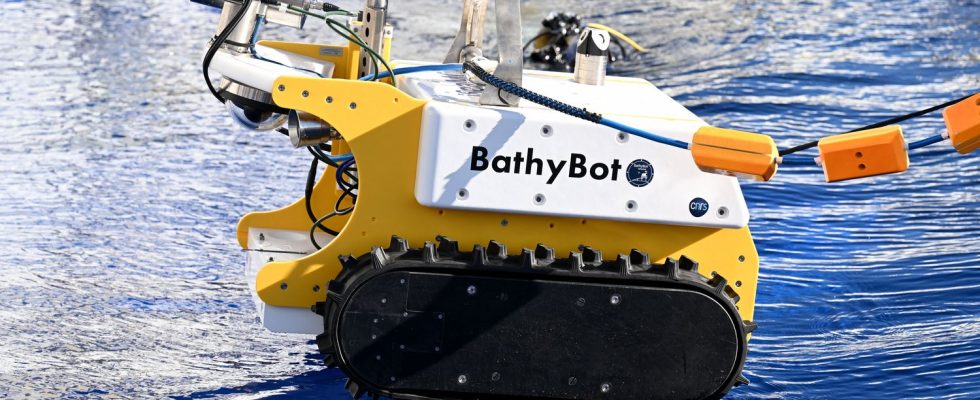After a complicated start, this robot with the false air of Wall-E, the hero of the cartoon from Pixar studios, has the sea of Toulon as its playground.
Article written by
Published
Update
Reading time : 1 min.

In recent months, BathyBot has experienced many setbacks. This robot with the false air of Wall-E, the hero of the cartoon from Pixar studios, has two cameras instead of eyes and caterpillars as legs Except that this scientific robot lives under water: in the Mediterranean, off from Toulon.
>> franceinfo junior. What you need to know about the BathyBot robot, which will explore the seabed in the Mediterranean
IResearchers from the National Center for Scientific Research (CNRS) launched it more than a year ago. The robot was submerged thanks to an oceanographic vessel and it was a submarine, the Nautile, which freed it from its chains. Sexcept that, problem, the engineers could not connect it to the power strip which had been installed at a depth of some 2,400 m. The system was not ready. However, this outlet was the only way to both supply the robot with electricity, but also to receive the images shot by its cameras. Fortunately, the power was restored – we had to wait for the intervention of a cable ship – to reconnect BathyBot.
So BathyBot has finally opened his eyes, but he can’t move yet, the power cut has been too long. A new operation must be carried out in the coming weeks to restart its engine. In the meantime, scientists can already observe and analyze the data transmitted by the robot.
BathyBot has many assets to collect this data
BathyBot is equipped with sensors that measure different parameters: water temperature, salinity, current speed and direction, particle flow and oxygen concentration.
With its ultra-sensitive camera. BathyBoth will also study bioluminescence, the ability of certain organisms to produce light. IHe’s not alone underwater.
Other instruments have been installed in recent months to form what is now called the Provence-Mediterranean underwater laboratory. It should make it possible to study more finely the mysteries contained in the abyss.
